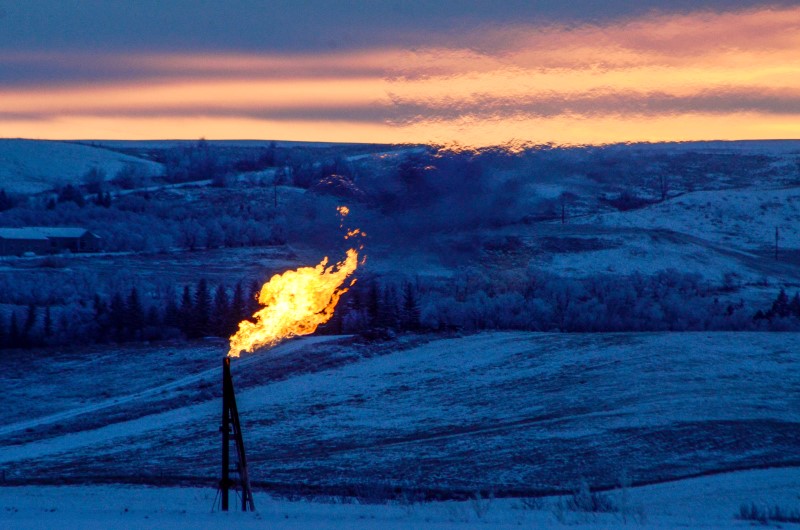
© Reuters.
NG
+7.33%
Add to/Remove from Watchlist
Add to Watchlist
Add Position
Position added successfully to:
Please name your holdings portfolio
Type:
BUY
SELL
Date:
Amount:
Price
Point Value:
Leverage:
1:1
1:10
1:25
1:50
1:100
1:200
1:400
1:500
1:1000
Commission:
Create New Watchlist
Create
Create a new holdings portfolio
Add
Create
+ Add another position
Close
By Barani Krishnan
Investing.com — Natural gas futures overcame the odds on Friday to rally to a positive weekly close, after five weeks in the red.
But technical charts suggested that without a steady upward trajectory, the front-month gas futures contract on the New York Mercantile Exchange’s Henry Hub could slip back under the key $2 support level.
The hub’s most-active May gas contract settled Friday’s trade up 10.7 cents, or 5.3%, at $2.114 per mmBtu, or metric million British thermal units.
For the week, May gas was also up by about 5%, logging its first weekly gain since the week ended Feb. 24, when it settled up 23% at just above $3 per mmBtu.
Despite its positive finish on Friday, the front-month gas contract hit a session low of $1.948 in early trading, signaling that it was still vulnerable to sub-$2 pricing in the coming week.
“You need sustainability above the 5-Day Exponential Moving Average of $2.11 to resume the uptrend,” said Sunil Kumar Dixit, chief technical strategist at SKCharting.com.
Friday’s session low in gas came after the U.S. Energy Information Administration, or EIA, reported that gas-in-storage in the United States rose by 25 billion cubic feet, or bcf, last week in the first series of injections for the spring season.
While that build was smaller than the 28-bcf injection forecast for industry analysts, what weighed on market sentiment was the size of gas inventories as a whole.
Last week’s injection took the balance in gas storage to 1.855 trillion cubic feet, or tcf, the EIA said.
That was 33% above the year-ago storage level and nearly 19% higher than the five-year average for gas inventories.
The 2023 pre-summer injection season is starting with one of the most bloated gas storages, courtesy of a winter that ran mostly warm, with one of the fewest snow storms ever.
Typically, this is a time when storage is at seasonal lows after large and consistent withdrawals during winter, when gas is burned for heating.
“Future builds are also expected to be slightly larger than normal due to warmer average temperatures across the US and could put surpluses back above 350 bcf,” Houston-based energy markets advisory Gelber & Associates said.
Source: Investing.com





























